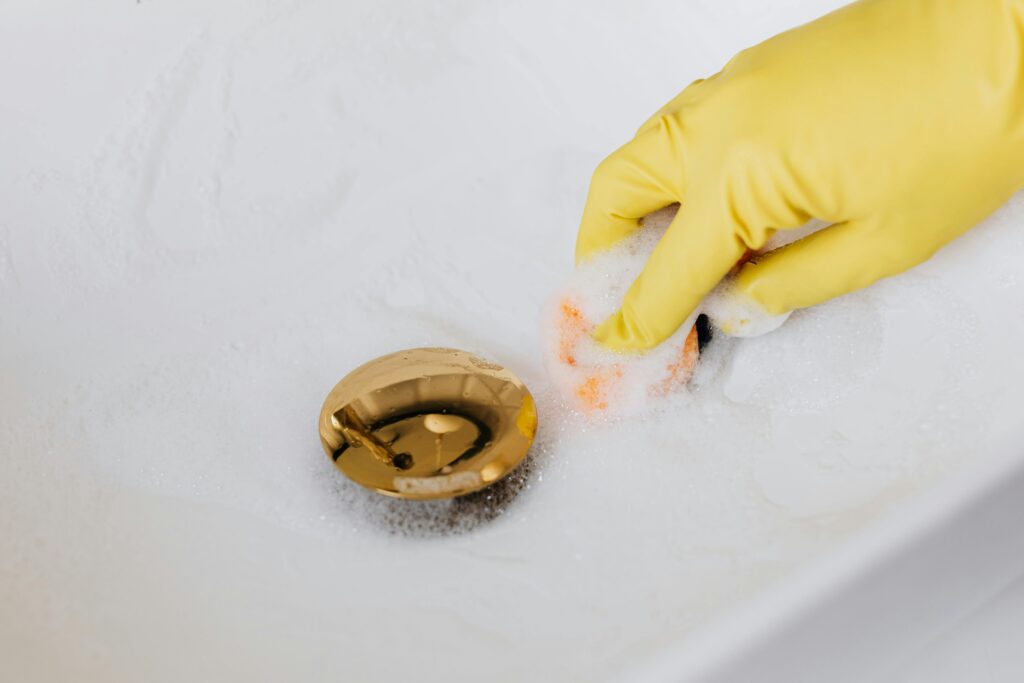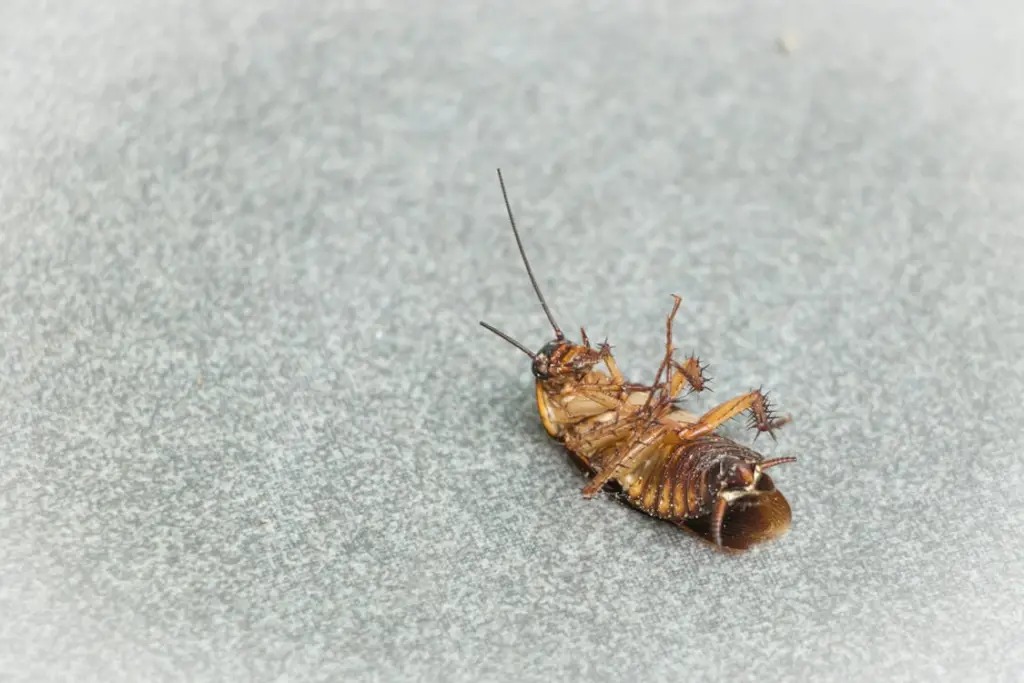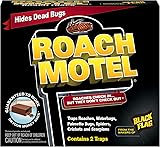Pest Lockdown
What Attracts Cockroaches? [18 Pest Attractants]
Cockroaches are unwelcome guests in any home. These resilient insects scurry around in darkness, seeking food, water, and shelter. But what exactly attracts cockroaches to your home? Understanding what beckons these creepy crawlies is the first step to keeping them out.
This guide delves into 18 factors that might be attracting cockroaches to your living space, helping you identify and eliminate potential havens for these unwanted visitors.
#1: Food and Crumbs
Even the tiniest food scraps are a feast for cockroaches. Crumbs left on the counter, spills on the floor, or forgotten snacks on the couch – they’re all a dinner invitation for these scavengers.
Prevention Tips
- Clean up spills and crumbs immediately.
- Sweep and mop floors regularly, focusing on areas around and behind appliances.
- Wipe down countertops after food preparation.
- Store food in sealed containers and don’t leave dirty dishes in the sink overnight.

#2: Dirty Dishes
A sink overflowing with dirty dishes is a five-star restaurant for cockroaches. Food residue clinging to plates and utensils provides a rich source of sustenance.
Prevention Tips
- Wash dishes promptly after use, or scrape leftover food into a sealed container before placing them in the dishwasher.
- Rinse dishes before stacking them in the sink.
- Empty the dishwasher regularly and avoid letting dirty dishes pile up.
#3: Garbage
Overflowing trash cans overflowing with food scraps, greasy wrappers, and other organic matter are a magnet for cockroaches. The strong odors emanating from garbage bins are particularly attractive to these pests.
Prevention Tips
- Use trash cans with tight-fitting lids.
- Line your trash cans with sturdy, leak-proof bags.
- Take out the trash regularly, especially when dealing with food scraps.
- Clean and disinfect your trash cans periodically to remove any lingering odors.
#4: Pet Food
Pet food bowls left unattended or overflowing with kibble provide a readily available food source for cockroaches. Additionally, spills around pet feeding areas can attract these unwanted visitors.
Prevention Tips
- Pick up any uneaten pet food after a reasonable amount of time (around 30 minutes for dogs and 1 hour for cats).
- Store pet food in airtight containers.
- Wipe up spills around pet feeding areas immediately.
- Consider placing pet food bowls on elevated stands to deter crawling insects.
#5: Moisture
Cockroaches are moisture-loving creatures. Leaky pipes, dripping faucets, or areas with poor ventilation can create a haven for them. Even condensation on windows or around air conditioners can be enough to attract these water-seeking pests.
Prevention Tips
- Fix leaky faucets and pipes promptly.
- Improve ventilation in bathrooms and kitchens with exhaust fans.
- Use a dehumidifier in areas prone to moisture buildup.
- Wipe up spills and condensation immediately to remove potential water sources.

#6: Cardboard Boxes
Cardboard boxes offer cockroaches a perfect hiding spot. They’re dark, provide shelter, and can sometimes harbor food debris. Stacks of old boxes in your basement or attic become prime real estate for a cockroach colony.
Prevention Tips
- Unpack and dispose of cardboard boxes promptly.
- If you need to store boxes, elevate them off the ground and keep them away from walls.
- Consider using plastic storage bins instead of cardboard boxes for long-term storage.
#7: Clutter
Clutter provides cockroaches with numerous hiding places. Piles of clothes, newspapers, or magazines create a dark, undisturbed environment that these pests find attractive.
Prevention Tips
- Declutter your home regularly.
- Store items in drawers, cabinets, or on shelves whenever possible.
- Avoid leaving piles of clothes or papers on the floor.
- Pay attention to areas behind furniture, where clutter can easily accumulate.
#8: Cracks and Crevices
Cockroaches can squeeze through surprisingly small openings. Cracks in walls, around pipes, or near baseboards offer entry points for these unwelcome visitors. Additionally, gaps around cabinets or appliances can provide harborage for cockroaches.
Prevention Tips
- Seal cracks and crevices in walls, around pipes, and near baseboards with caulk.
- Use weather stripping to seal gaps around doors and windows.
- Ensure a tight fit between cabinets
#9: Overgrown Vegetation
While cockroaches primarily live indoors, overgrown vegetation near your home can serve as a breeding ground. Dense bushes, piles of leaves, or tall grass can provide cockroaches with shelter and moisture, making them more likely to venture inside for food and water.
Prevention Tips
- Keep your lawn trimmed and free of debris.
- Cut back overgrown bushes and shrubs near your foundation.
- Seal any gaps around pipes or vents that lead outside, as these can become entry points for cockroaches.
#10: Firewood
Firewood stored too close to your home can be a haven for cockroaches. The dark, sheltered spaces between logs create ideal hiding spots for these pests. Additionally, moisture trapped within firewood can attract them further.
Prevention Tips
- Store firewood at least several feet away from your house.
- Keep firewood piles off the ground, using a raised rack to promote air circulation.
- Cover firewood with a tarp to prevent moisture buildup.
- Inspect firewood for signs of cockroaches before bringing it indoors.
#11: Sewage Leaks
Sewage leaks are a major attractant for cockroaches. The strong odor and the presence of organic matter create a feeding ground for these pests. Additionally, sewage leaks can create moisture problems, further enticing cockroaches.
Prevention Tips
- Regularly inspect your plumbing system for leaks, especially around drains and pipes.
- Address any leaks promptly to prevent attracting cockroaches and other pests.
- Maintain a clean sanitary sewer system by having your septic tank pumped regularly (if applicable).

#12: Drains
Drains, particularly those that are slow to drain or clogged, can be attractive to cockroaches. Food debris and organic matter trapped in drains provide a food source. Additionally, the moisture in drains is another draw for these water-seeking insects.
Prevention Tips
- Avoid pouring grease or food scraps down the drain.
- Use drain traps to prevent food debris and odors from entering your home.
- Regularly clean drains with a drain snake or commercial drain cleaner to remove buildup.
#13: Appliance Gaps
The spaces behind and underneath appliances like refrigerators, stoves, and dishwashers can harbor cockroaches. These areas are often dark, undisturbed, and may contain crumbs or spills that attract these pests.
Prevention Tips
- Pull appliances out from the wall periodically to clean behind and underneath them.
- Vacuum these areas regularly to remove any crumbs or debris.
- Seal any gaps between appliances and the wall to prevent cockroaches from hiding.
#14: Pet Droppings
While not a primary food source, pet droppings can attract cockroaches. The organic matter in droppings provides sustenance for these opportunistic feeders. Additionally, the strong odor associated with pet waste can be another factor.
Prevention Tips
- Clean up pet droppings immediately, both indoors and outdoors.
- Dispose of pet waste in sealed bags to prevent odors from attracting roaches.
- Maintain a clean litter box for cats, scooping it daily to minimize waste buildup and odors.
#15: Composting Piles
Composting is a great way to reduce waste, but it can also attract cockroaches if not managed properly. The decaying organic matter in a compost pile provides a food source for these pests. Additionally, moisture buildup in an improperly maintained compost bin can create a suitable habitat.
Prevention Tips
- Ensure your compost pile is well-aerated to prevent moisture buildup.
- Maintain a balanced ratio of green and brown materials in your compost to optimize decomposition and minimize odors.
- Locate your compost bin far from your house to reduce the risk of attracting cockroaches indoors.
#16: Houseplants
While not a direct food source, houseplants can attract cockroaches if they are overwatered or have decaying leaves. The moist soil and organic matter create a suitable environment for these pests.
Prevention Tips
- Water your houseplants only when the soil feels dry to the touch.
- Avoid overwatering, as this can lead to root rot and attract pests.
- Regularly remove dead leaves and debris from your houseplants.
- Inspect houseplants for signs of cockroaches, especially around the base of the plant and in the soil.
#17: Strong Odors
Cockroaches are attracted to strong odors, particularly those that indicate potential food sources. This includes the smell of decaying organic matter, overflowing trash cans, or even pet food. Additionally, some personal care products like fragrances and hairspray can emit odors that attract cockroaches.
Prevention Tips
- Store garbage in sealed bins and take it out regularly.
- Clean up spills and messes promptly to prevent odors from attracting roaches.
- Use personal care products sparingly and store them in closed cabinets.
- Consider using natural cleaning products with minimal odor instead of harsh chemicals.
#18: Dead Cockroaches
While the sight of a dead roach might be cause for celebration, it can actually attract more of them. Cockroaches are attracted to the pheromones released by dead roaches, which signal a potential food source or a suitable breeding ground.
Prevention Tips
- Don’t leave dead roaches lying around. Dispose of them promptly by vacuuming them up or sweeping them into a sealed bag for disposal in the outdoor trash bin.
- After removing dead roaches, clean the area with soapy water to eliminate any lingering pheromones.

How to Get Rid of Cockroaches
If you’ve identified attractants and still have roaches, it’s time for action. Consider DIY methods like baits and traps, or contact a professional pest control service for a targeted approach.
DIY Pest Control Products
Cockroach infestations can be tackled with a variety of DIY methods, each with its own advantages and considerations. Here’s a closer look at three common options:
- Baits: These are poison-laced stations that attract roaches with a food source. Cockroaches ingest the bait and return to their nest, contaminating others who feed on the same roach or its droppings. Baits are effective for long-term control and work even if you don’t see immediate results. However, they require patience, as it takes time for the roach population to die off.
- Traps: These capture roaches alive using sticky adhesives or mechanical traps. They’re ideal for monitoring roach activity and identifying entry points. However, traps only eliminate the roaches they capture and don’t address the entire population. Additionally, they need frequent emptying and may not be suitable for large infestations. You may also opt for pheromone traps which work by releasing a chemical substance that attracts cockroaches to the trap, helping speed up the eliminating process.
- Gels: These are cockroach-killing pastes applied in targeted areas like cracks and crevices where roaches frequent. Roaches ingest the gel and die. Gels are effective for targeted control and residual action, meaning they continue to kill roaches for some time after application. However, improper application can make them less effective, and they may not be ideal for areas with high moisture or dust.
Black Flag Roach Motel Insect Trap, 12-Pack 12 Pack Trap
- EFFECTIVE CONTROL: Traps roaches, waterbugs; Palmetto bugs; spiders; crickets and scorpions
- HIDES DEAD BUGS: Conceals dead insects – just throw trap away when full
- PESTICIDE FREE: Contains no pesticides and no pesticide fumes or odors
- ATTRACTS ROACHES: Special lure attracts roaches into the trap; where they become stuck to the glue surface
- GUARANTEED: Guaranteed to work or your money back – see product label for details
Sale
Maxforce FC Magnum Roach Gel Bait (Two 33g Tubes)
- For use in: indoors or outdoors, in commercial or residential areas. Keep tightly capped and use within 2 years.
- Application: Do not spray near baits, do not use heavy detergents or cleaners, or do not use in very dusty area.
- Gel will dry out and get a dry skin on top but roaches will still eat it up to a year. However, if contaminated or gone, reapply.
- Pet safe: yes, when used as directed ALWAYS READ THE LABEL BEFORE USE!!
Professional Pest Control Services
For a severe infestation or recurring problems, consider professional pest control services. Professionals have access to stronger insecticides and can identify and address the root cause of the infestation. This often provides a more long-term solution and is the best way to go if you are still unsure what attracts cockroaches to your home, as their expertise can help pinpoint the source of your infestation.
Final Thoughts
By understanding what attracts cockroaches and taking preventive measures, you can significantly reduce the risk of an infestation. If you do encounter these pests, act swiftly to eliminate them and prevent their return. A roach-free home is a healthier and more enjoyable environment for everyone.
FAQs: Debunking Roach Myths and Habits
Are cockroaches attracted to light?
No, cockroaches generally dislike light. They’re nocturnal creatures and scatter when light is turned on. However, some species might be less light-averse.
Are cockroaches attracted to cat litter?
Yes, cockroaches can be attracted to cat litter, especially if it’s dirty or not changed frequently. The organic matter in litter provides a food source, and the ammonia in urine can be another attractant.
Are cockroaches attracted to sugar?
Sugar is a definite attractant for cockroaches. They’re drawn to sugary spills, crumbs, and leftover food containing sweet ingredients.
Are cockroaches attracted to food?
Absolutely. Food of all kinds is a major attractant for cockroaches. They’ll scavenge for crumbs, spills, and any organic matter they can find.
Are cockroaches attracted to period blood?
While not their primary target, cockroaches can be attracted to the scent and blood itself. Proper menstrual hygiene practices are important to minimize attracting these pests.
Are cockroaches attracted to coffee grounds?
The jury’s out on this one. While some believe the strong smell repels them, others suggest they might be drawn to the organic matter. It’s best to dispose of coffee grounds properly to avoid attracting unwanted visitors.
Are cockroaches attracted to cardboard?
Cockroaches find cardboard boxes appealing for hiding. The dark, enclosed space provides shelter. Cardboard with leftover food scraps or crumbs is even more attractive.
Are cockroaches attracted to water?
Yes, cockroaches are moisture-loving insects. They need access to water to survive. Leaky pipes, condensation, and areas with poor ventilation can all attract roaches.
Are Cockroaches Attracted to Air Fresheners?
Air fresheners are unlikely to attract cockroaches directly. Their strong sense of smell is used to locate food sources, not artificial scents.


